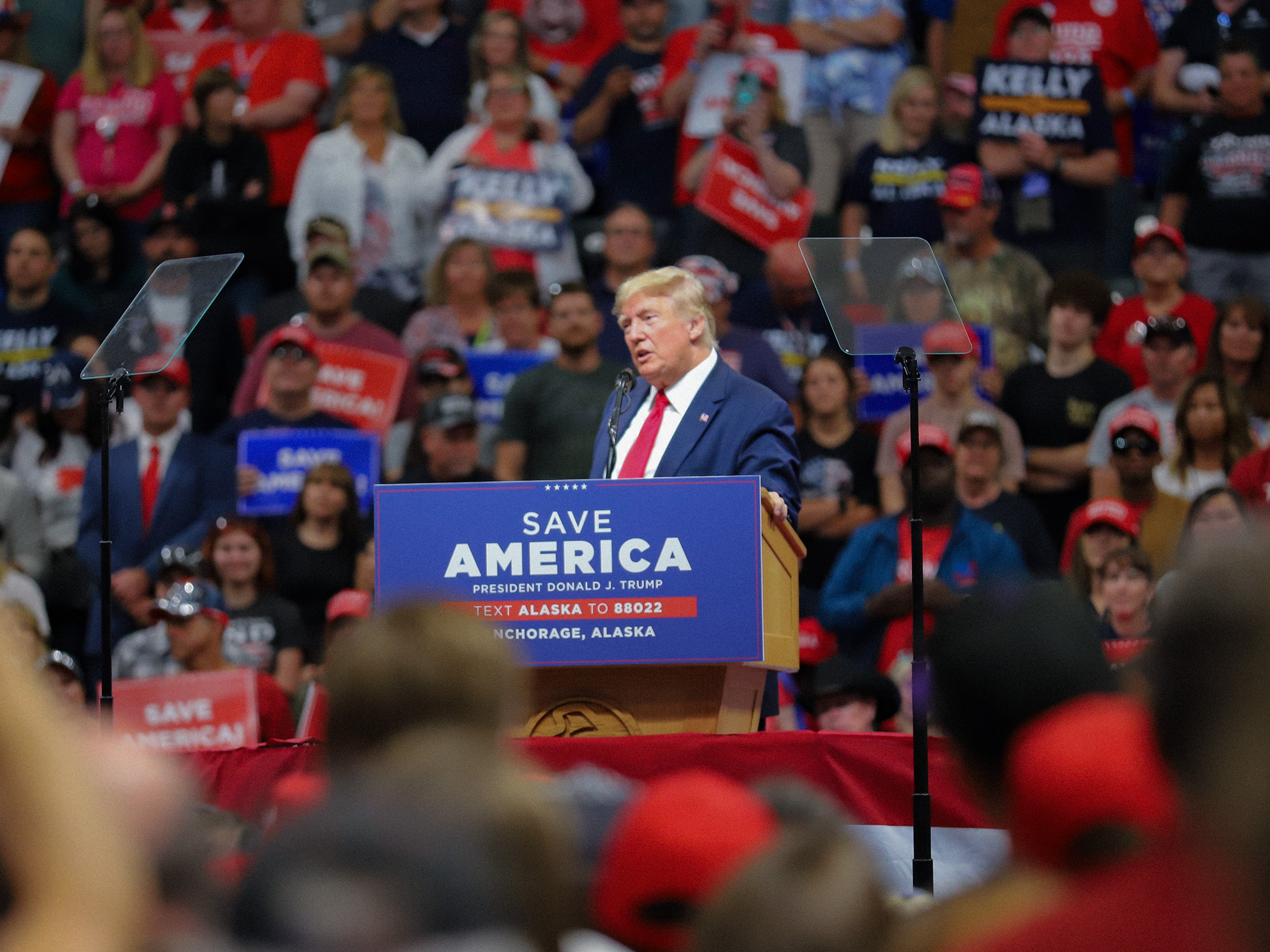| Liz Ruskin | Alaska Public Media |
Mixed in with the claims and grievances Donald Trump aired at his Saturday rally in Anchorage, the former president took aim at Alaska’s new election system, which he called “ranked choice crap voting.”
“You never know who won in ranked choice. You could be in third place and they announce that you won the election,” Trump claimed, “It’s a total rigged deal. Just like a lot of other things in this country.”
The crowd booed, suggesting that ranked choice voting is unpopular among Trump-aligned voters. A number of rally attendees told reporters they don’t trust the idea of ranking and intend to just vote a No. 1. That’s perfectly legal. The Division of Elections says general election ballots will count if they have just one oval filled in.
”We’re going to have to learn how to use the rank choice voting system...
But communications strategist Sarah Erkmann Ward is working to convince Republicans that, no matter how much they dislike the system, they should rank the candidates. She’s pushing a message of “rank the red.”
“Choose from among the Republicans,” she advises. “Rank them in order of your preference. And that’s as simple as it needs to be.”
Ward understands conservative reluctance to rank. When the new system was proposed on the 2020 ballot, Ward worked on the campaign against it. But since the ballot measure passed and has become law, she has switched gears and is working as a Republican outreach consultant for Alaskans for Better Elections. Ward said she’s being pragmatic.
“Love it or hate it, this is what we have to deal with,” Ward said. “So if we’re going to elect Republican or conservative leaders, we’re going to have to learn how to use the rank choice voting system, at least for now.”
Many Democrats and progressives are also reluctant to rank candidates, especially in the special general election for U.S. House on Aug. 16, which will be Alaska’s first opportunity to rank a ballot. Left-of-center voters have said they like Democrat Mary Peltola but can’t bring themselves to vote for either of the Republicans, Sarah Palin or Nick Begich. Unlike conservatives, their objections usually relate to the available choices, not to the concept of ranked choice voting.
Republican candidates in the special U.S. House race have a tricky challenge as they try to make ranked choice voting work for them. Art Hackney is working for the Begich campaign. He assumes, based on polling he’s seen, that Peltola will finish first once the first-choice ballots are counted. Then, whichever Republican finishes third will be removed from the running and the ballots that went to that candidate will be redistributed according to the voter’s second choice.
“Game No. 1 has to be that you don’t come in third,” he said. “Because if you come in third, you are, you know, moot to the whole thing, and it becomes your second-choice votes that are the things that matter.”
Hackney describes a Republican campaign strategy that requires finesse. If too few Republican voters rank a second – either because they don’t like the way one Republican beat up on the other, or because they don’t like the idea of ranking – they risk handing the seat to Peltola.
Hackney said he’s concerned the new system will confuse voters. He’s also concerned that the type of broadsides Trump aimed at ranked choice voting could diminish acceptance of the election results. But, he said, that’s a problem that applies to traditional ways of voting now, too.
“Amongst that crowd at the rally, you’ve got literally 100% of the people who were there still think the election was stolen from Donald Trump,” Hackney said. “So that impacts how they view anything related to any kind of voting.”
Contrary to Trump’s claim, there’s no evidence of “rigging” in the upcoming Alaska elections, and the Division of Elections says it will be transparent in how it counts votes.





